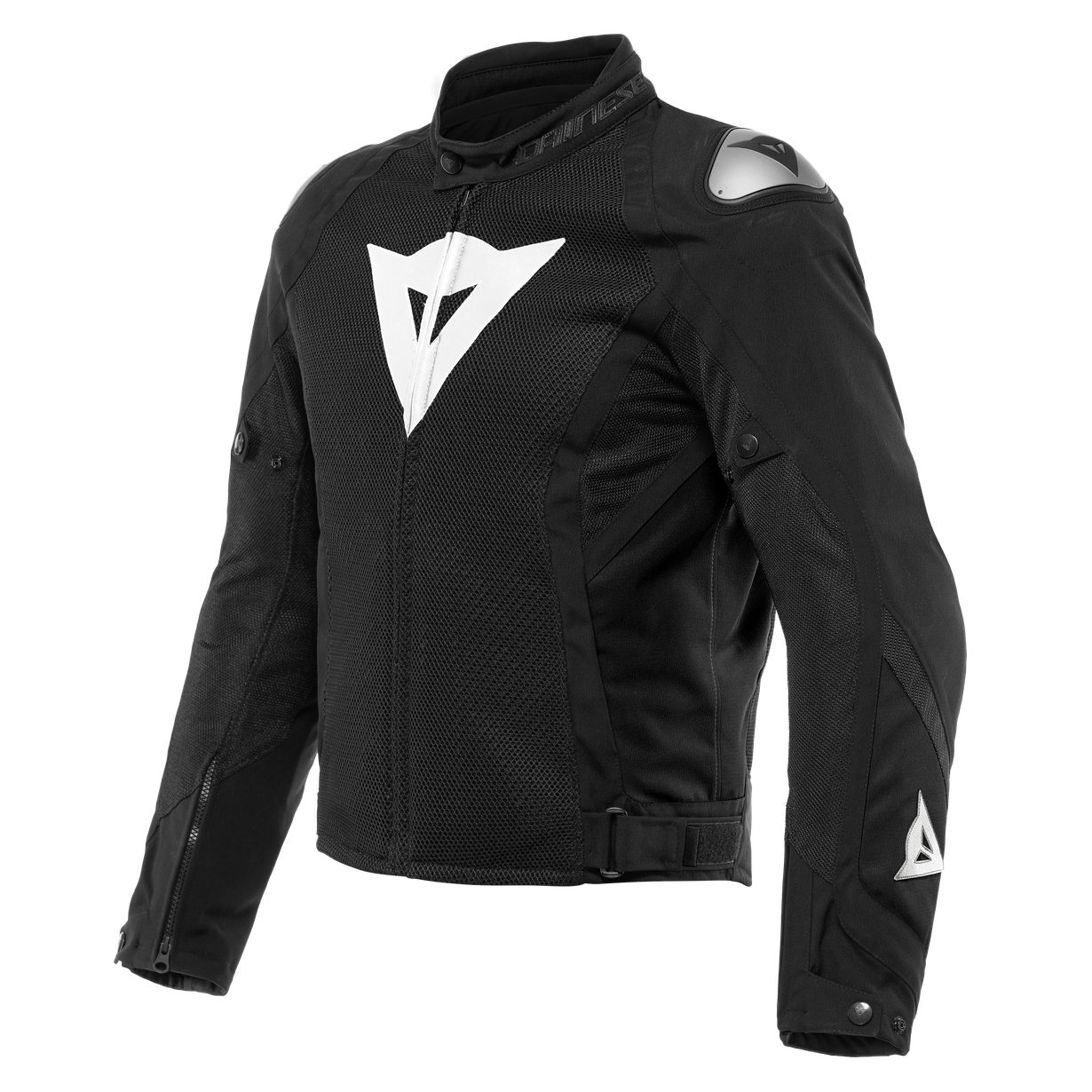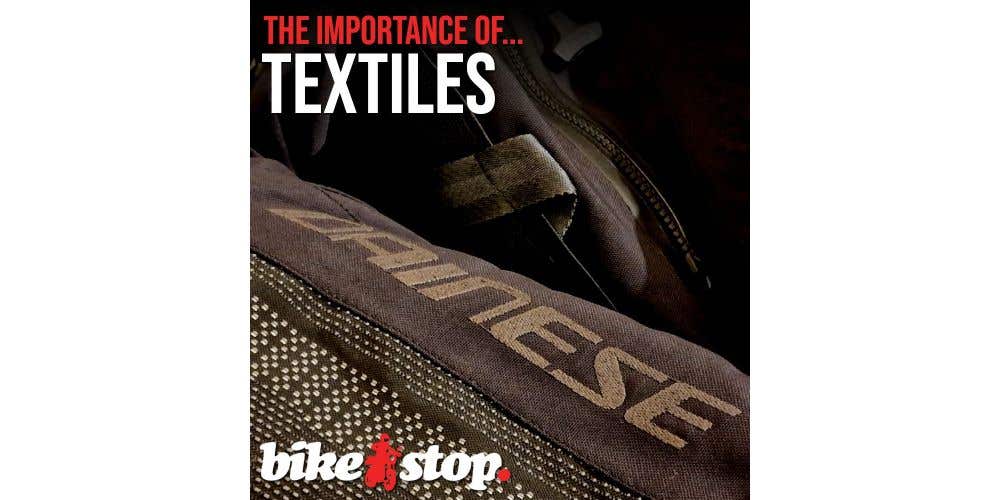When you picture a biker, the mental image will almost always contain some strapping figure dressed in leather. Whether you imagine Valentino Rossi or James Dean, there's going to be some animal skin involved. However, our reality is far removed from that of a GP racer or a Hollywood icon. Most of the time, we have to deal with the inconveniences of weather and practicality. Sure, if you're lucky enough to live somewhere in the world where the sun is always shining and the outside temperatures vary between 20-25°c all year round, there are probably a few reasons why you can't opt for leathers for every trip. Sadly, I can't think of where this is the case anywhere on Earth, and this certainly doesn't apply to the UK. Our climate produces 40°c heat in summer and sub-zero temperatures in winter, with the rest of the year, mainly being a grey void of drizzle and unpleasantness.
Additionally, while many of us use bikes purely for recreational purposes, some of us need to do stuff. Whether it's commuting, shopping or riding to somewhere where walking around in a tight leather onesie may be less than ideal. I'd argue that for most situations, textiles are infinitely preferable. In our last article on the importance of leathers, we posted a pros and cons list for leathers vs textiles. Here's a quick recap.
Leathers
Pros
- Durability: Leather is more hard-wearing and abrasion-resistant than the majority of textiles. Look after a set of leathers, and they'll last for a good few decades. They're also simpler to repair than textiles.
- Protection: Leather offers a significant amount of protection in the event of an accident. A good set will mitigate the chances of damage from abrasion, cuts and impact.
- Style: Who doesn't want to leave their house in the morning looking like a member of The Avengers? It's entirely subjective, of course, but they do tend to look better.
Cons
- Comfort: Leather can be heavy and stiff, especially when new. It can take time to break in. Putting them on and taking them off can also be a real pain, particularly if they're wet or you consumed too many mince pies over Christmas.
- Weather: They don't do well in terrible weather. Contrary to popular belief, they're not waterproof and provide very little warmth in the winter months. At the same time, they can become horribly hot and sticky through summer. Ick.
- Price: Leathers tend to be more expensive than many textiles, which may make them less accessible to riders on a budget. A top-of-the-range made-to-measure Dainese CustomWorks suit could set you back more than a bike.
Textiles
Pros
- Comfort: Textiles are often more lightweight and flexible than leather, making them more comfortable to wear. They are much simpler to put on and take off and significantly less restrictive than their leathery counterparts.
- Weather: In hot weather, mesh textiles are fantastic for keeping cool. In winter, waterproof and insulated options are the best choice for grotty commutes.
- Price: Although you can spend eye-watering sums on the latest and greatest textiles, the entry point tends to be significantly cheaper than leathers.
Cons
- Durability: Although some incredible materials are available, very few come close to leather in terms of durability. However, good textiles should last for many years, although you may need to top up their waterproofing ability from time to time.
- Style: They've come on in leaps and bounds in terms of style, but let's face it, they're never going to be sexy. Kill Bill wouldn't have been the same if Uma Thurman wore hi-viz textiles.
- Protection: While there's little wrong with the protection available, per se, it's easier to fall into the trap of buying the wrong size clothing and having necessary armour not lining up where it's supposed to be.
In addition to that brief comparison, it's essential to consider where you'll be doing most of your riding. Sure, if you spend 97% of your riding miles on a race track, equipping yourself with the latest and greatest one-piece leathers makes sense. However, most of us cover most of our miles on public roads. While leathers offer supreme abrasion resistance, the reality is that you're unlikely to need that level of abrasion resistance on the roads. This is simply because something will get in the way before you can test how well your leathers stand up to abrasion. Things like kerbs, trees, cars, lampposts, bus shelters, wheelie bins, hedges, ditches, dead badgers, and walls will do their utmost to stop you from sliding down the road to a gentle stop. Most textiles will have more than enough abrasion resistance to handle the slide until something slows you down.
The real benefit of textiles is the flexibility they offer. In the height of summer, an armoured mesh jacket allows air to flow through it, keeping you cool and comfortable. During the winter months, insulated, waterproof, windproof textiles keep you warm and dry. They're as equally comfortable both on and off the bike, easy to put on, simple to take off and can be relatively wallet-friendly. There aren't really any downsides.
What should I look for when buying textiles?
Compared to leathers, there's a huge variety of materials, coatings, fabrics and styles in the world of motorcycle textiles. Ideally, when you're considering textiles, you should focus on what kind of riding you'll be doing.
Summer
For summer riding, nothing beats a mesh jacket. Air passes through the loose weave of the jacket to keep you cool and dry. You still get the full complement of armour in the shoulders and elbows, along with optional back and chest protectors.
Some mesh jackets will come with a removable windproof liner, which can be used when the weather is changeable, giving you great flexibility for long summer rides.
Most mesh jackets will be a short-cut waist length and have the ability to zip into compatible trousers. It's pretty common to zip a mesh jacket into leather trousers for summer riding, and it's a combination that works well.


Dainese Energyca Air Textile Jacket
All Seasons
There's a happy middle ground if you ride all year but don't have the budget for separate winter and summer outfits. A whole raft of jackets can provide year-round protection and offer a good compromise between the two extreme seasons.
Jackets in this category feature a much tighter weave of the face fabrics, so they're not as breezy as a mesh jacket but not as bulky and stifling as a winter jacket.
They may lack some of the features of full winter or summer jackets, but they'll perform well. A decent all-season jacket typically features a shorter cut like a summer jacket and a removable thermal lining like a winter jacket. They should offer some form of waterproofing to keep you dry and, of course, will connect to compatible trousers.


Dainese Sport Master Gore-Tex Jacket
Winter
For winter, you want the meanest, biggest, baddest jackets and trousers you can find. These comprise advanced waterproofing, typically using Gore-Tex or Gore-Tex Pro, which keeps the rain out while allowing sweat to evaporate.
Nearly all winter jackets and trousers come with removable thermal liners, typically filled with synthetic insulation material. However, some top-tier jackets use goose down for their thermal liners, an incredibly light and effective insulator.
Decent winter jackets will be below waist length to cover as much of your torso as possible and have the ability to zip into compatible trousers. If things get a bit too warm, various zips and vents will allow some airflow, but don't expect summer or all-season levels of cooling.


Rukka Nivala 2.0 Gore-Tex Jacket
Naturally, different jackets and trousers will also suit some bikes better than others. Sports bike riders will most likely want to opt for shorter-cut jackets paired with suitable trousers, whereas adventure bike riders will almost certainly plump for longer jackets. You know your style, and you know your bike, and there's enough choice out there to find something that'll work.
Nearly all jackets you'll find come equipped with the standard active safety components; shoulder and elbow armour. Some will come with back protectors, and a few will cater for chest protectors. Active safety components, such as armour, are there to deal with impacts and dissipate energy when colliding with whatever obstacle you've been unlucky enough to slide into. However, active safety is only one side of the coin. The flip side is passive safety. When we talk about passive safety, we're really talking about suitability for the conditions and your riding style. If you wear a big, bulky winter jacket with no ventilation in 40°c heat, you'll be horribly uncomfortable to the point of distraction. This is just as unsafe as wearing a mesh jacket in the middle of winter. Use the right tool for the job. If you're wearing the right gear, you're not thinking about it being too hot, too cold, too sweaty or too heavy, which allows you to concentrate on the job of riding. Don't underestimate the importance of comfort and mobility.
Fit and comfort: Proper fit is important for both safety and comfort. A correct-fitting set should be relaxed without being tight but not too loose that the armour sits in the incorrect place; elbow, shoulder and knee armour should sit on your elbows, shoulders and knees. Unlike leathers, you should have a fuller range of motion, and it shouldn't be uncomfortable or awkward to stand fully upright. Most jackets feature pre-curved arms, so your arms probably won't hang perfectly straight by your sides, but everything else should feel pretty relaxed and casual. If you wear a back protector, make sure you try on your new jacket with the back protector in place. You should be as comfortable standing up as you are in the riding position.
Armour: All textile jackets and trousers should feature CE-approved armour for the shoulders, elbows and knees. Additionally, you can add back or chest protectors for increased protection. A lot of jackets will offer some form of attachment for a back protector and maybe pockets for chest protectors.
Style: It may seem quite minor in the grand scheme of things, but it's important to get gear you like the look of. If you like the way they look, you're more likely to wear them.
Brand Reputation: While some people sneer at popular brands, they've become popular for a reason. I've met a few people who sneer at anything which isn't a made-to-measure BKS suit from 'the good old days', but Dainese, Alpinestars, Spidi, RST, Klim and Rukka are decent brands to look out for when it comes to textile gear.
Remember that investing in high-quality gear is an investment in your safety while riding. By taking the time to carefully consider your options, you can find a jacket and trousers that offer both style and protection.
As always, your best bet is to get yourself down to Bike Stop and try stuff on. Talk to the staff about your requirements, what kind of riding you do, when you ride, and what bike you have, and the team will be about to point you in the right direction, as well as make sure your new jacket and/or trousers fit correctly.






